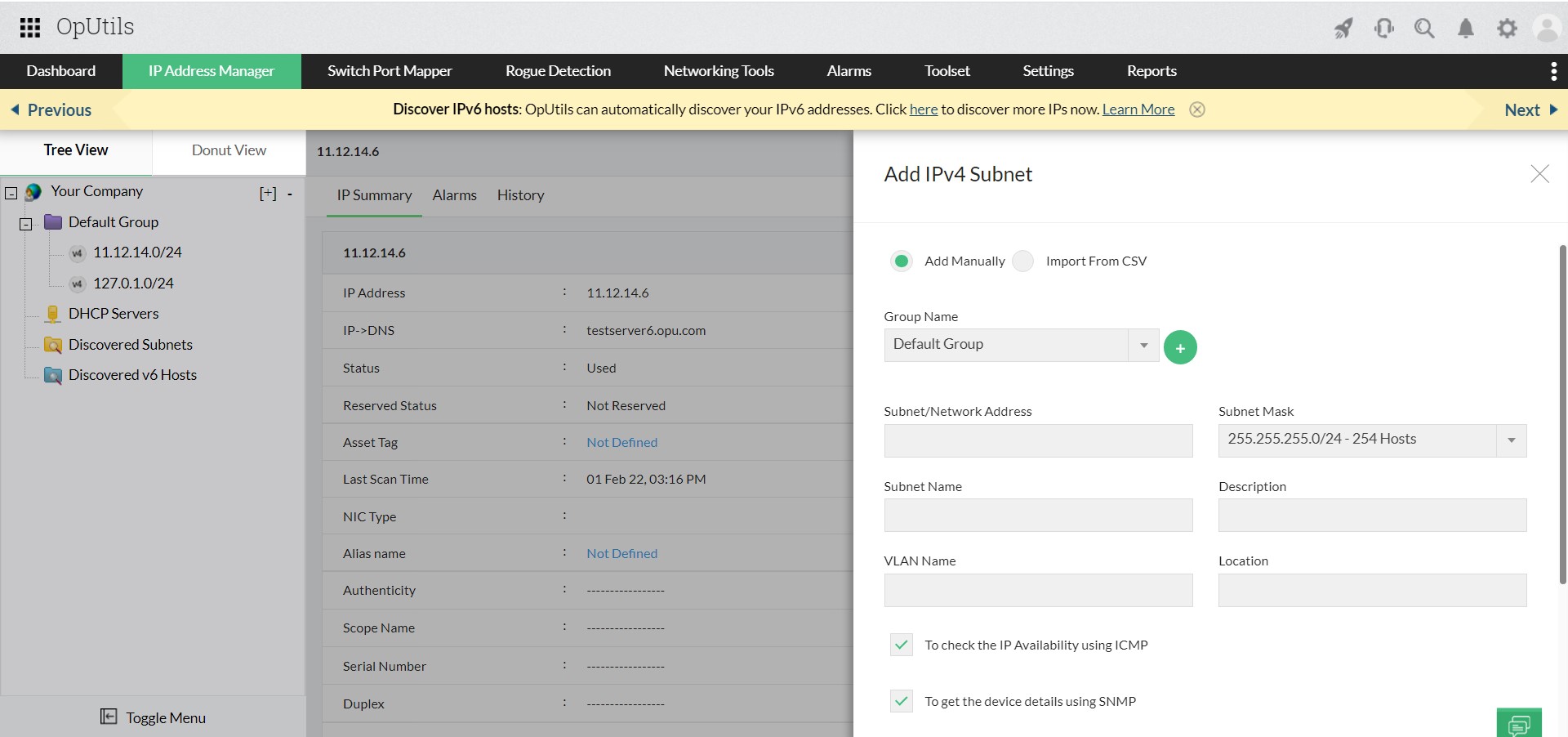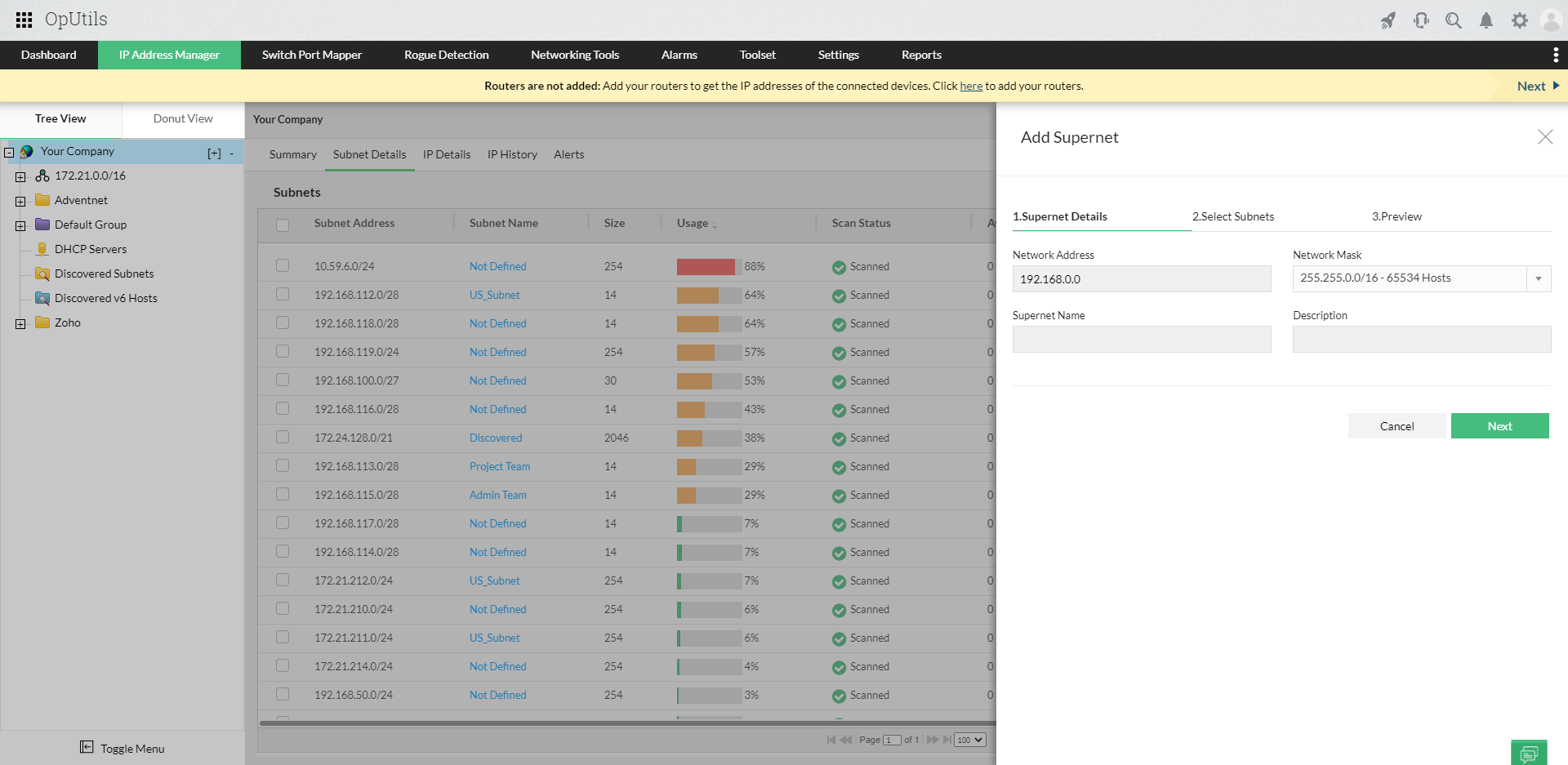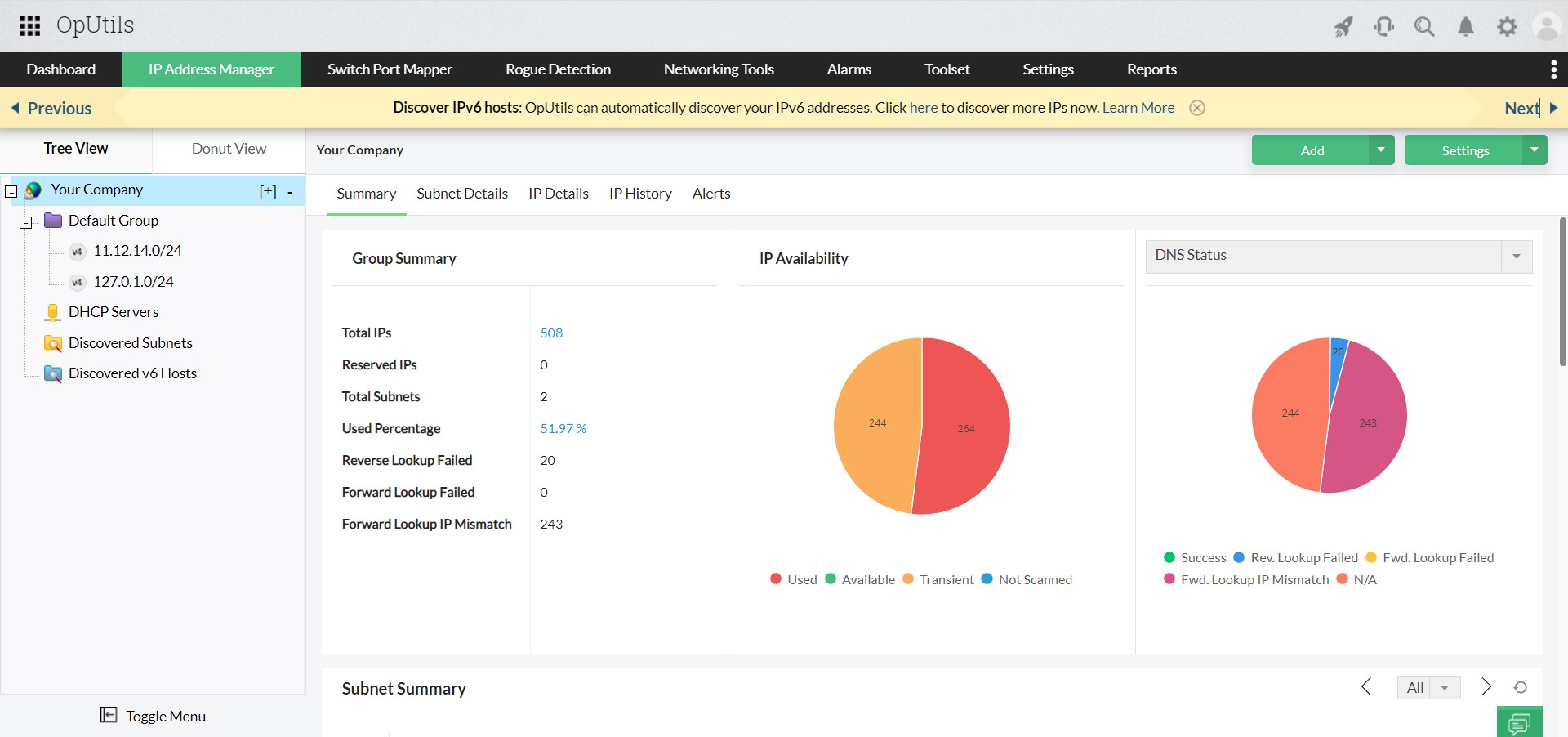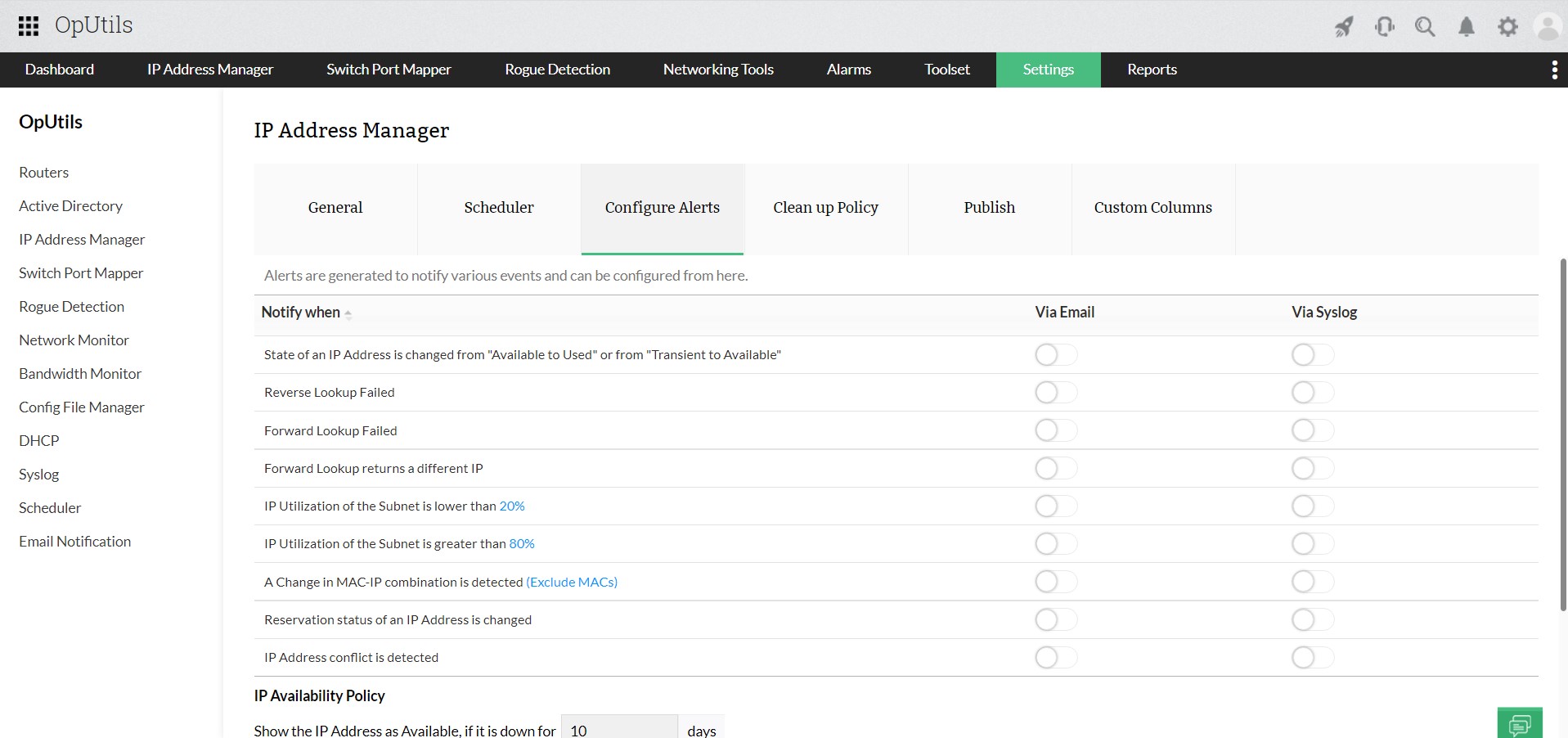Modern IT infrastructures are no longer confined to a single physical location. Networks today are distributed across several geographies, remote sites, and data centers. Their massive IP address space is also spread across these locations as multiple IP groups including IPv4 subnets and IPv6 sites. Traditional IP address management (IPAM) options make it an arduous task to gain a holistic view of these IP groups, understand their utilization and capacity limits, and enable proactive monitoring. This has made deploying an effective subnet monitoring solution an integral part of an effective IP address management strategy.
ManageEning OpUtils offers a comprehensive subnet monitoring solution as a part of its reliable IPAM feature set. The IPAM module provides advanced IP scanning, IP address tracking, and effective IP monitoring capabilities—including MAC address scanning. Also, with support for both IPv4 and IPv6 addresses, OpUtils enables effective subnet monitoring that enables:
Getting started with a subnet monitoring tool can be quite a hassle. Most subnet monitoring tools require network admins to perform several manual operations to start monitoring subnets or are stringent with their options to run subnet discovery.
This process of getting started with a subnet monitoring tool is simplified by OpUtils. It offers flexible discovery options including CSV and XLS file uploads to import multiple subnets, supernets, and IP groups at once. Users can also import their IPv4 subnets and IPv6 subnets or sites directly by specifying the subnet details such as prefix, prefix length, subnet group details, and subnet IP.
Networks which deploy DHCP servers to manage IP allocations (and lease dynamically) can discover their IP subnets directly from the DHCP servers by specifying the DHCP server details.

As a common practice, network admins often group the IP subnets distributed across their physical networks. For instance, for simplified IPAM purposes, subnets used in a remote office A are grouped as Office A subnets. This helps network admins to plan their subnet scanning and subnet data updates as per the IP subnet group's networking requirements. However, with traditional IPAM or subnet monitoring techniques such as using distributed spreadsheets, grouping and monitoring these subnets as in the network can be impractical.
With OpUtils, network admins can create, modify, and update IP subnet groups as their network evolves and scales. Network admins can leverage hierarchical IP group-based IPAM to streamline IP scanning, tracking, allocation, and management.
Also with support for supernet monitoring, network admins can go a step further and group their IPs based on the route aggregation techniques deployed in their network.

Monitoring the number of available and used IPs in a subnet is critical to ensuring that all new devices entering your subnet can connect with your network. Subnet exhaustion can lead to loss of network connectivity from business-critical devices that are crucial for desired network functionality. To avoid these hurdles, OpUtils' subnet monitoring capability continually scans your network to track critical subnet utilization metrics including the subnet usage percentage, number of available IP addresses, and DNS status of the IPs in the subnet.
Networks admins can get in-depth insights into the IPs within the subnet using the IP Details tab. This tab displays the address and network details of the IP. Network admins can use this tab to understand how IPs within their subnets are utilized and by whom.

Staying ahead of IP issues aids network admins in avoiding several cascading network issues. For instance, a simple IP address conflict when left unmonitored can lead to loss of connectivity for end devices and deter network availability.
By enabling proactive subnet monitoring, OpUtils' subnet monitor proactively scans network subnets and instantly alerts network admins on emerging issues. This includes alerts on subnet overutilization, subnet under-utilization, and detecting IP address conflicts. These alerts are sent to network admins through their preferred channels, including emails. Network admins can also choose from the alert scenarios provided to receive alerts when specific conditions are met, such as scenarios that might impact their network.
Additionally, the comprehensive Network Toolset ensures that network admins have all the tools they need to diagnose alerted network issues right from a centralized console.

Subnet monitoring does not stop with monitoring and alerting. Network admins need to continually track their subnet utilization metrics over time to enhance capacity planning and ensure optimal resource usage.
OpUtils' subnet monitoring capability comes with historical IP usage logging and granular report generation capabilities. Network admins can view historical IP utilization details under the IP Details tab and can also generate periodic reports on subnet utilization including the Unused IP Addresses report, IP Usage Summary report, and Reserved Static IP Addresses report.
These reports can be automatically scheduled to the configured email addresses at the set time intervals. Or, network admins can also choose to download these reports on-demand as PDFs or CSVs.
Eliminate the hassles of subnet monitoring; try OpUtils for free today!
Download a free, 30-day trial!Traditionally, network admins used spreadsheets and CLI query tools to discover, inspect, and manage IP addresses and the IP address management (IPAM) data—which includes subnet utilization, available IPs, and IPs' DNS resolution status. However, these techniques posed the following challenges:
These challenges, along with the tried and tested resource and cost benefits of using a subnet scanner has accelerated the move to using subnet monitoring solutions.